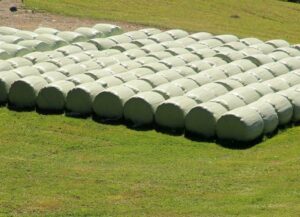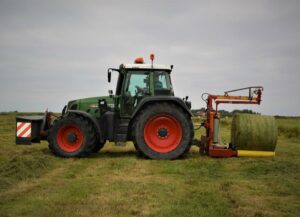Mercedes González & Nuria García
Corn silage, hay, and alfalfa silage are common sources of forage and are very often used in the feeding of dairy cattle because of their high digestibility, higher rate of intake and positive impact on milk production. However, they sometimes have limited availability particularly in some regions with unfavorable weather conditions or land or water constraints, which is why alternative sources of forage must be considered.
Sugarcane bagasse is a co-product of the sugar and ethanol production industry, leaving a residue rich in fiber that can be used as a source of forage when feeding dairy cattle. Because of its low nutritional value, it is often used under conditions where forage is scarce, or where its use as a source of fiber is advantageous because of its lower cost. One example are areas where sugar or paper paste are produced, and the use of sugarcane can be a benefit over other more expensive sources of forage.
Cereal grain straws are also used in dairy cow rations because, although they do not provide critical nutrients, they are a source of fiber that promotes rumen motility and reduces the risk of acidosis. A significant number of farms include them in their rations at different stages of the production cycle, particularly during dry-off.
The nutritional value of wheat straw is low, with approximately 80% neutral detergent fiber (NDF) and 4.0% protein on a dry basis (DM). Similarly, sugarcane bagasse has more than 80% NDF and 3.0% protein, and as a result both feedstuffs can reduce DM intake and milk production when added in excess to the diet.
Therefore, when used as a source of fiber, an adequate proportion of concentrate should be incorporated to adequately meet the digestive energy and protein needs of dairy cows in production.
A study (Molavian et al., 2020) assessed the effects of sugarcane bagasse on milk production and ruminal fermentation in mid-lactation cows when partially replacing wheat straw as a source of fiber.
The cows included in this study were assigned to three experimental diets:
- 0BCA: 0% sugarcane bagasse and 27% wheat straw
- 9BCA: 9% bagasse and 18% straw
- 18BCA: 18% bagasse and 9% straw
The diets were administered in the form of total mixed rations by adding a concentrate mix.
The nutritional composition of each component of the fiber supplied was as shown in the table below:

The effects of the partial substitution of wheat straw with sugarcane bagasse on feed and nutrient intake, and milk production and composition are shown in the next table:

The sugarcane bagasse increased rumination time
The replacement of the fiber source with sugarcane bagasse had no negative effects on feed intake or milk production or composition.
Dry matter intake was similar among groups. Milk production and composition were also not affected by the substitution of the fiber source and was similar for all three groups as follows: milk 37.0 kg/day, fat 3.89%, protein 2.90%, and lactose 4.39%. The same thing happened with true protein and lactose, with similar composition among all treatments.
The addition of sugarcane bagasse linearly increased rumination time, with 376 minutes/day in the 0BCA group, 426 minutes/day in the 9BCA group, and 477 minutes/day in the 18BCA group; feeding time however was not affected.
The average ruminal pH was 6.68 in the 0BCA group, 6.50 in the 9BCA group, and 6.10 in group 18BCA, and it was observed to decrease linearly as wheat straw was replaced by sugarcane bagasse. This result was like the observations of previous studies (Beauchemin and Yang 2005) where physically effective fiber concentration (peNDF) increased chewing time, but this increase in time did not necessarily increase ruminal pH.
Sugarcane bagasse fiber is less degradable than that of wheat straw. In this study, diets that added sugarcane bagasse turned out to be more fibrous than those with more wheat straw. Another interesting fact was that the fiber supplied by the sugarcane bagasse had longer particle size (>19 mm), so it was suspected that this could cause refusal or sorting.
In this study, the change of the fiber source was not accompanied by increased feeding time or changes in the amount of DM consumed. In general, the cows in this study were able to maintain their intake and milk production by selecting fiber particles greater than 19 mm and ruminating longer to process the less degradable fiber.
Conclusion
These results show that sugarcane bagasse, while less digestible than wheat straw, is still a good source of physically effective fiber for mid-lactation cows who also consume high amounts of concentrate. It can be a good alternative as a source of fiber without adversely affecting DM intake or milk production.
Reference
M. Molavian, GR Ghorbani, H Rafiee, K A Beauchemin. Substitution of wheat straw with sugarcane bagasse in low-forage diets fed to mid-lactation dairy cows: Milk production, digestibility, and chewing behavior. Journal of Dairy Science. 2020 Sept; 103(9): 8034-8047.
© 2020 Dairy Knowledge Center. All Rights Reserved.











